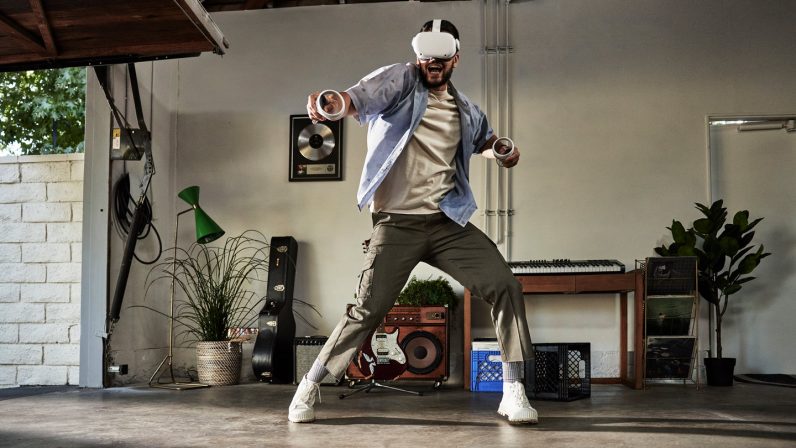
It’s hard to escape the hype of the metaverse even if you can’t experience much of it. Last year, both Microsoft and Meta (rebranded from Facebook), demoed their virtual worlds of the future.
In the videos depicting these dreamlike spaces — where you could work with your colleagues or hang out and play games — I had a burning question about the avatars representing users: WHERE ARE THEIR LEGS? Hit the play button in Satya Nadella’s tweet below to watch a clip of Microsoft’s metaverse demo:
The metaverse is here, and it’s not only transforming how we see the world but how we participate in it – from the factory floor to the meeting room. Take a look. pic.twitter.com/h5tsdYMXRD
— Satya Nadella (@satyanadella) November 2, 2021
The avatars in both these virtual worlds from a couple of tech giants are just floating torsos, and that’s a rather odd bug/feature for them to have in common. So I decided to ask experts if there was any technical reason behind it.
After all, the characters in most games with a third-person view have legs. Is it especially hard to do that with virtual versions of ourselves?
A lot of that has to do with sensors. Currently, metaverse experiences are largely restricted to VR headsets; some are compatible with handheld controllers, like the Oculus touch controllers. However, there are hardly any commercially available sensors and controllers for our legs. That means your leg movement can’t be accurately detected and depicted in virtual environments.

But can’t we just use cameras to capture what our legs are doing? Gijs den Butter, co-founder of Netherlands-based XR controller company SenseGlove, said cameras on your headset are not enough to track leg movements:
It is very hard to capture your leg movements from only a headset. Sometimes, your belly might block the line of sight for cameras on the headset that could potentially capture the movements of your legs.
We could use potentially use sensors mounted on your feet; however, that is yet another kind of peripheral to add to the mix.

One of the things these metaverses are trying to do is to place your real-life self in a virtual setting. Dr.Rolf Illenberger, managing director of VRdirect, an enterprise-focused VR platform company, said that misrepresenting users’ height in VR could annoy them:
In VR, the “physical height” of an avatar can be quite different from your real-life impression. So people might feel the Avatar is pretty small or unusually tall, which is one of the reasons many of these platforms avoid legs for the time being.
He also pointed out that in real life when you look down, you’re used to seeing your legs are at a specific distance away from your face, which you’re used to. But in the virtual world, if that situation is not replicated, it could cause you to feel nauseous. So until there are better sensors to avoid this on headsets, companies might avoid creating legs.
With the limited experiences available in current metaverses, movement is largely dependent on teleporting from one place to another. Butter said that in the coming years, we might have in-home devices that’ll help us capture movements of legs.
“If in the future, locomotion becomes our standard way of moving in the metaverse, we will get legs for our avatars. When everyone would have an omnidirectional treadmill at home, making an inverse kinematics model (a digital model for human movement) of your legs would not be too difficult,” he said.
We reached out to Meta and Microsoft to ask about their leg-less avatars. While Meta didn’t comment on the story, Microsoft agrees with some of these points.
The company said the legs are coming in future versions:
Today, in most mixed reality settings there are no input sensors for legs, which makes puppeteering the avatar and inferring the correct leg poses a challenging task. Microsoft Mesh uses the latest technologies available to represent our users as avatars and make them feel present in shared experiences.
Over time, we plan to continue to evolve our avatar stack and leverage new capabilities in order to be able to accurately represent the full human form.
Till then, think of this as a feature, not a bug — and float freely in the metaverse.
Get the TNW newsletter
Get the most important tech news in your inbox each week.




